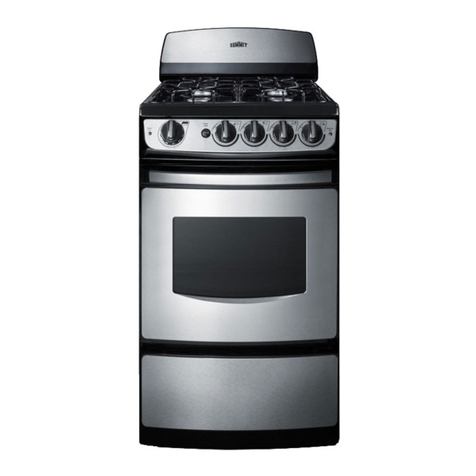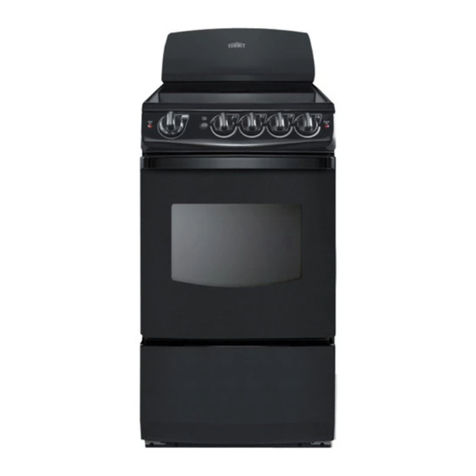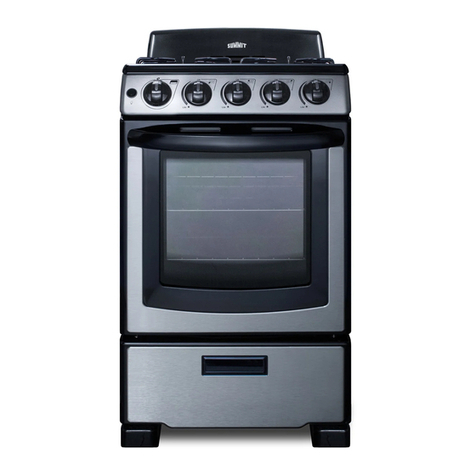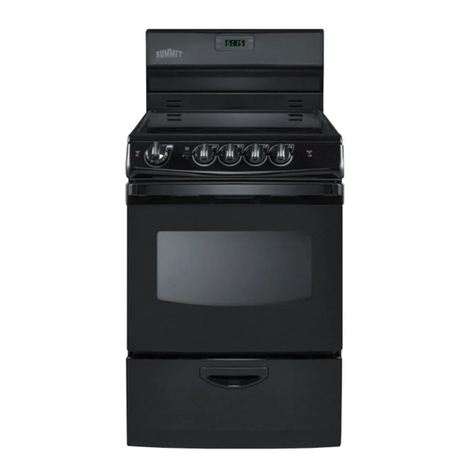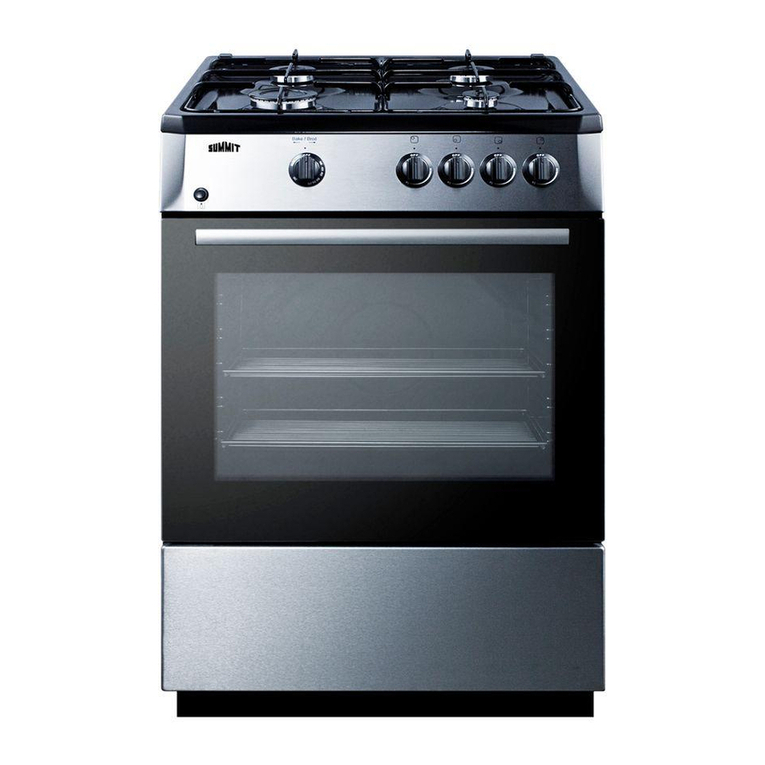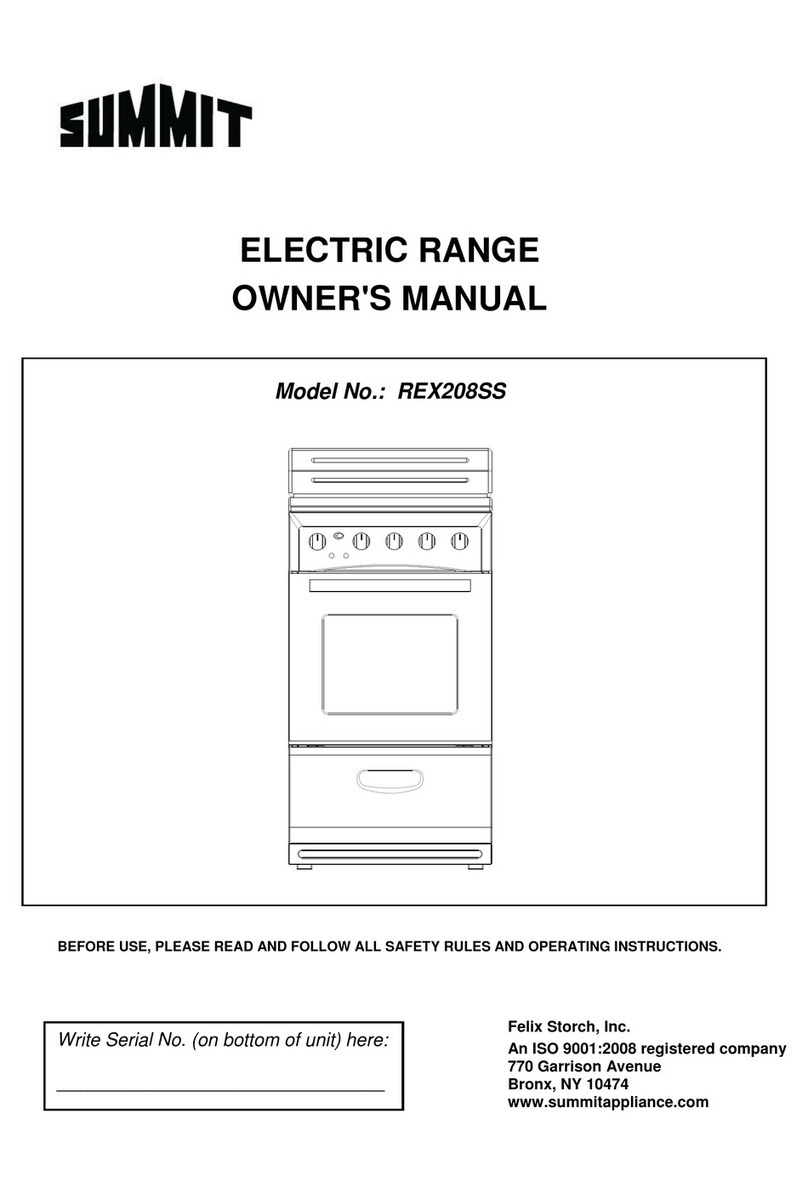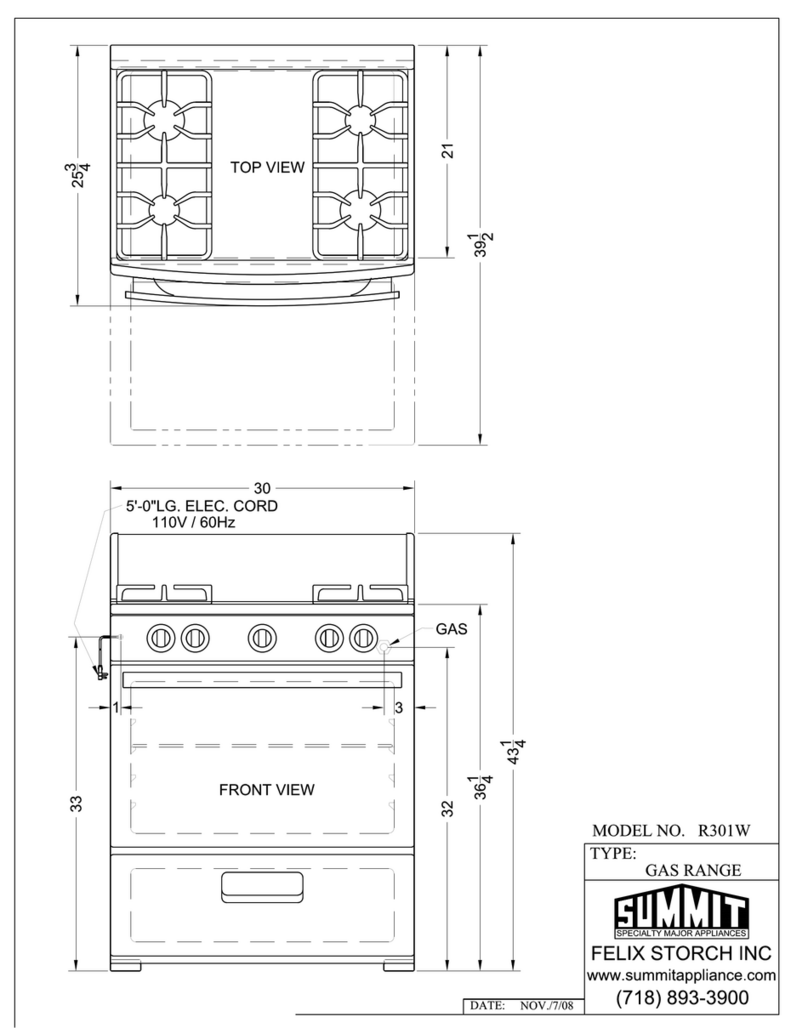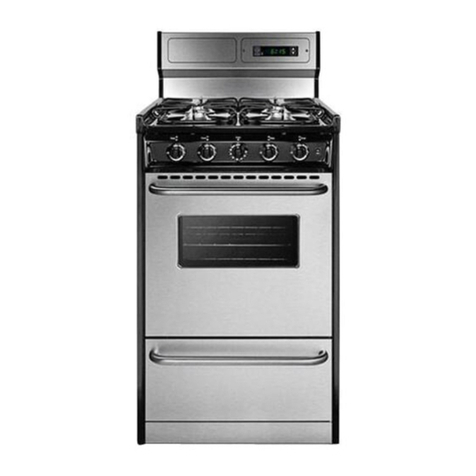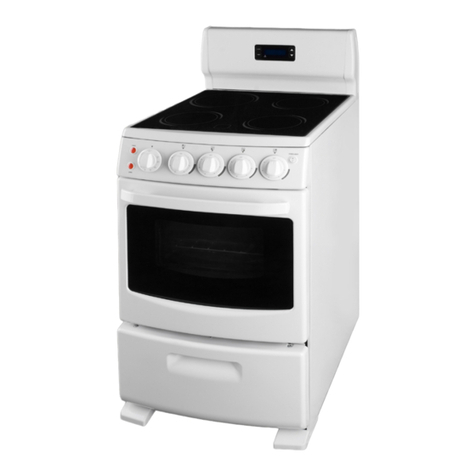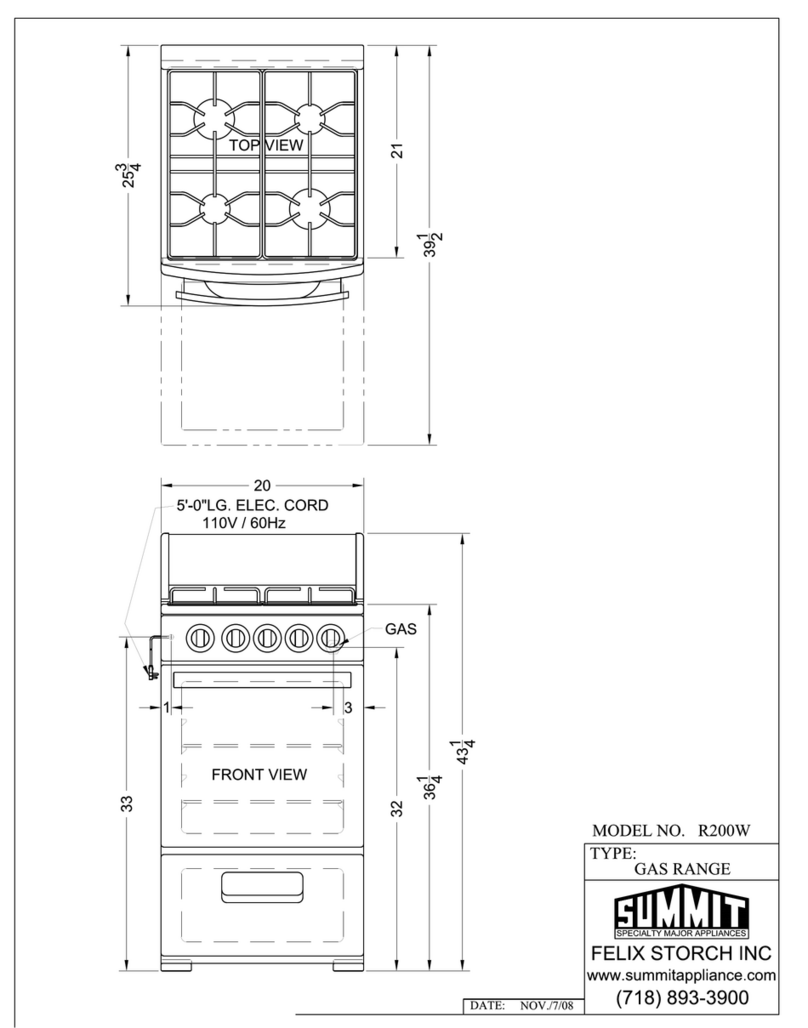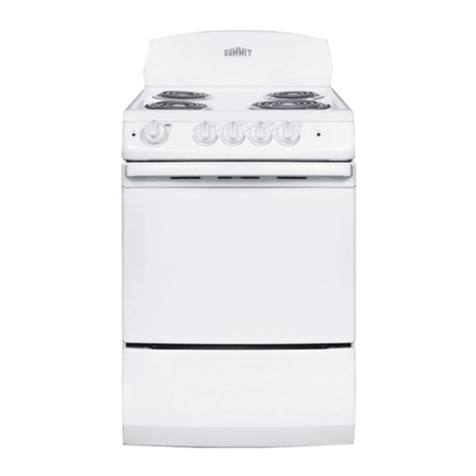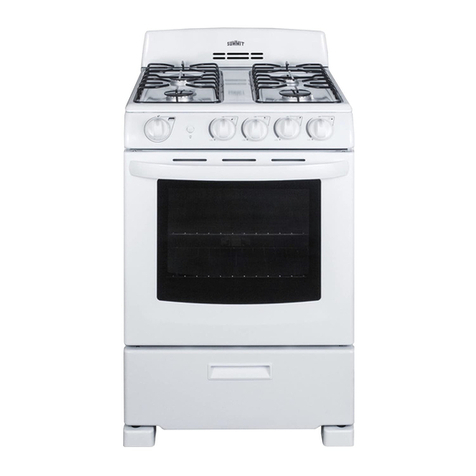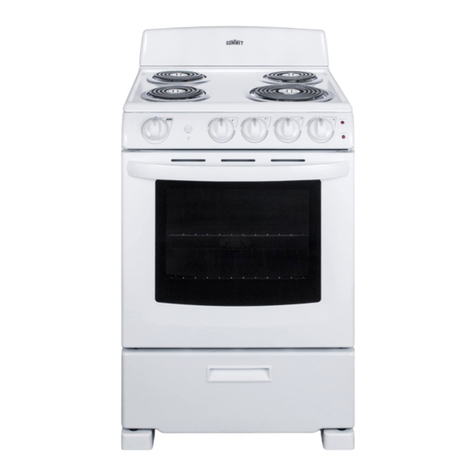
GET\ERAL CARE AI\D CLEANING
WARNING: Make sure you disconneot your stove befole cleaning, Be caleful if it is hot. Always follow label instrLrctions on
cleaning prodr.rcts.
IMPORTANT: Do not use any type of abr.asive sponge for the cleanliness of any surface of your stove. The product can sttffet'
consiclerable damages. Soop, *uié. and a soft cloih or sponge are suggested filst unless otherwise noted.
SURI-ACES
Co¡rtrol panel and knobs
Porcelain enamel surfaces,
painted surfaces
Oven cavity
(OJO:ESTE TEXTO SOLO
APLICA PARA MODELOS
ELECTRICOS)
HOW TO CLEAN
Before cleaning the control panel be sure that the knobs are oD TURN OFF
position. Clean with cloth ancl warln soap water. Remove residttes and dry
carefully. The water excess in atld around the contlols might cause stove damage'
Make sule of rernoving cleaners completely to avoid stains which are hal'd to
relÌ)ovc thlotrghotrt the tilne.
The control knobs rnay be removecl fol easier cleaning. Trl Lemove, pLrll thern
straight off the stern. Clean with cloth and warm soap watel'. Rinse well'
To relocate the knobs, make the flat side of the k¡ob cavity coincide with the
control rod flat side. Then, iust press the knob inside
Be sure to weat'rttbber gloves to protect yor-rr hands.
. Do not use oven cleaners, cleaning powders, steel wool pads, synthetic fiber pads
or any other matelials that rnight darnage the sulface finishing'
. Ifany aci<l, grease, sugar, etc. spills on surfaces while they are hot, use a dry papel
towei or cloih to wipe it up light away. When the surface has cooled, clean with
cloth and warln soap water. Rinse well.
. Also it is possible to use vinegar ancl water solution'
Fleavy spatteling or spillovers rnay require cleaning with a mild abrasive cleanel
Use vinegat' to t'etnove hard stains (white stains
Do not ,,r" oven cleaners, cleaning powders, steel wool pads, synthetic fiber pads
or any other rnaterials that might datnage the surface finishing'
. To clean the oven bottom, gently lift the bake element' This will allow easier
access to the oven bottorn for cleaning. Be carefr-rl not to raise the elelneut more
than 4 to 5 inches from the resting position
ale heatecl.
a
a
. Clean with warm water. Rinse and dry with clean towel.
Oven heating elements
(OJO: ESTE TEXTO SOLO
APLICA PAIìA MODELOS
no not.l"un the oven heating elernents. Any soil will burn off when the elements
ELECTRICOS
Oven racks f-"uL" tt . racks slicle rnole easily apply a small amottnt of vegetable oil or'
cookins oil to atowel and wipe the edges of the lacks with it.
Broiler pan n"r'rlou. ttt" broiler pan frorn the oven after bloiling ancl carefully pour orrt the
grease t'om the pan into a proper containet'.
. Wash and rinse the broiler pan using hot water and a soap-filled scouring pad.
. If food has bulned on, splinkle with detergent while it is hot and covet'it with wet
paper.towels or a dishcloth. Soaking the pan will remove burned-on food'
. Also it is possible to rtse viuegar and water solution.
¡ Do not nse cornmercial oven cleaners, cleaning powclers, steel wool pads or harsh
abrasives on any sttrfaces.
Hea tterins or srrillovers may requile cleaning with a rnild abrasive cleaner.
Oven light (on some modcls) B.fr" r'"plu.ing the oven light bulb, be sttre than oven light switch is ttrln OFF'
Replace bulb with a 4O-watts household appliance bulb
. The oven cloor is rernovable for cleaning.
l'Iow to rerrove:
. Operr the door to the fully opened position.
a
a
l,ift-ofï oven door
o Pull tro the lock located on both hinge stt ts and it in the hook of the

